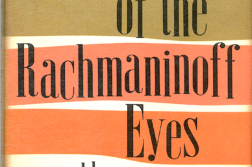IDA RUBINSTEIN’S name appears from time to time, often just in passing, in ballet histories, but she appears much more frequently in lesbian histories as a member of Natalie Barney’s Parisian salon and one of the lovers of artist Romaine Brooks. Yet there are few books about her in English. The most frequently cited are Ida Rubinstein: a Theatrical Life, by Michael De Cossart (1987), and Dancing in the Vortex, by Vicki Woolf (2000).
By all accounts an intellectually precocious, multilingual woman prone to extreme mood swings, she treated life as a “theatrical production,” in the words of one critic. Rubinstein was born into a fabulously wealthy Russian-Jewish family in 1885, but by age ten she was an orphan and was sent to live with an aunt in St. Petersburg. Described as a woman of extraordinary beauty with fabulous legs, she began her dance career as a private student of Michel Fokine. In 1908, he choreographed the “Dance of the Seven Veils” from Wilde’s Salomé for her. Since her dancing was not quite up to the professional standard demanded at that time, Fokine had her enter on a palanquin, gradually unfolding her veils. It was described as “magnificent theatre,” and possibly Serge Diaghilev’s first glimpse of her. Banned in St. Petersburg, she continued to perform the ballet without the accompanying play, unveiling herself down to a tiny bra and beaded skirt. A hundred and three years ago, Diaghilev hired her to dance the title role in Cléopâtre in the opening season of the Ballet Russes, when other company members included Pavlova and Nijinsky.

Italian poet, raconteur, and man-about-town Gabriele D’Annunzio—wildly popular in Paris a hundred years ago—was obsessed with both Rubinstein and Saint Sebastian.
Rubinstein founded her own ballet company, Les Ballets de Madame Ida Rubinstein, in 1928. She starred in each of her shows, commissioning new ballets, scores, and costumes from all the artists with whom Diaghilev collaborated: Ravel, Stravinsky, Bakst, Fokine, Leonide Massine, and many more. Her shows drew crowds, and Diaghilev felt that she had betrayed him by luring his designers, composers, and choreographers with larger salaries than he could afford. He also thought that she was lacking in talent. But Gide called her “incomparable”; Proust praised her legs; Sarah Bernhardt thought well of her; and some critics praised her “simplicity and grandeur.” Others (not just Diaghilev) were harshly critical of her work, complaining that she’d bought her way into the world of ballet. Anti-Semitism may certainly have played a role in the criticism. Her company’s final performance took place in 1934, by which time she was almost fifty years old and well past her dancing prime.
Romaine Brooks and Rubinstein met before World War I, and Rubinstein fell madly in love with her. She even thought about giving up her career and moving with her to the country. Brooks was among the first female artists to use a woman’s viewpoint to depict other women as objects of desire. “Beautiful like an orchid” is how Brooks described her, and Rubinstein was muse and model for many of her works, including Femme Morte and Weeping Venus. One painting, a spoof of D’Annunzio’s Saint Sebastian fixation, showed Rubinstein naked and bound to a post, while a diminutive archer (a stand-in for the short-of-stature D’Annunzio) shoots an arrow at her. Brooks had once been one of D’Annunzio’s lovers, too, and the women had begun their affair to take revenge on him. But after several years, when Brooks tired of Rubinstein, she moved on to Natalie Barney, whom she had to share with other women.
Following financial advice, Rubinstein had invested her money outside of Paris, where her home was destroyed during World War II. If she had ever written a memoir, it does not survive. She lived out the war in London, having arrived in 1941 thanks to the intervention of one of her lovers and protectors, Walter Guinness. After the war, she moved to the French Riviera, where she lived a solitary and lonely life as a Roman Catholic, having converted before the war. Near the end of her life, Rubinstein invited Romaine Brooks to visit, but she refused to come.
Art and life were all one for Ida Rubinstein, from her “slinky walk” (copied by Parisian ladies) in La Pisanelle to the uniform designed by Léon Bakst, which she wore while nursing French soldiers during World War I. Even in her last years, she wore specially tailored silk robes during religious retreats. She died in 1960 of a heart attack.




